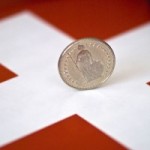Gold rose for a third day on Friday and capped two weeks of declines as a string of downbeat U.S. data backed Fed Vice Chairwoman Janet Yellens intentions to maintain the current pace of Feds monthly bond purchases, curbing speculations for an earlier-than-expected stimulus tapering. A weaker U.S. dollar allowed commodities denominated in the greenback to regain positions. Soft physical demand however continued to keep gains in check. Silver, platinum and palladium marked weekly declines.
On the Comex division of the New York Mercantile Exchange, gold futures for settlement in December rose by 0.25% to $1 289.50 per troy ounce on Friday. Prices held in a range between days low of $1 279.70 and high at $1 290.60 an ounce, near Thursdays one-week high of $1 293.60. The precious metal gained for a third straight day on Friday and settled the week 0.1% higher, snapping two weeks of declines.
Gold was initially pressured in the beginning of the week on recently arisen speculations the Federal Reserve may begin scaling back its monthly bond purchases earlier than projected after data showed U.S. third quarter GDP growth exceeded expectations and employers added more jobs than expected in October. The U.S. dollar was however pressured after downbeat data from the past couple of days backed Fed Vice Chairwoman Janet Yellen’s comments at a Senate hearing for maintaining the current pace of the central bank’s monthly bond purchases.
A report by the Labor Department showed on Friday that prices of U.S. imports fell by 0.7% in October, underperforming expectations for a 0.4% decline. Year-on-year, the import price index plunged by 2.0%, sharper than an anticipated 1.6% decline and trailing the preceding month’s 1.0% contraction. The drop in import costs was mainly based on a 3.6% fall in inbound oil shipments, the biggest decline in more than a year.
Meanwhile, export prices unexpectedly fell by 0.5% in October, a seventh monthly retreat in eight, indicating a worrisome global economic weakness. The decline suggested that major trading partners, including Europe, are struggling so much that U.S. exporters have little room to raise prices.
According to a separate report, manufacturing activity in the New York Region unexpectedly contracted by the most since January as new orders fell. The NY Empire State Manufacturing Index declined by 2.21 in November, defying analysts’ expectations for a rise to 5.00 from the preceding period’s reading of 1.52. The new orders index slumped to -5.33, down from 7.75 in October. Labor market conditions also worsened with the employment index falling to 0.00 from 3.61 in the preceding month.
A separate report by the Federal Reserve showed U.S. industrial production also surprisingly contracted last month. Output fell by 0.1%, confounding projections for a 0.2% advance after it expanded by 0.7% in September. Capacity utilization disappointed and fell to 78.1%, trailing both expectations and September’s reading of 78.3%.
This comes after President Barack Obama’s nominee for next Federal Reserve Chief, Janet Yellen, said at a Senate hearing on Thursday she’ll press on with Fed’s massive quantitative easing program until she sees a robust economic recovery. Yellen said she doesn’t see evidence at this point that the current policy is inflating assets bubbles, further curbing speculations for an earlier-than-expected tapering of the stimulus.
In her prepared comments prior to the hearing, Yellen called last month’s 7.3% unemployment rate too high, noting the economy and labor market were performing short of their potential, while inflation remained well below Fed’s 2% target and provided room for easy money supply.
Also fanning negative sentiment for the U.S. economic recovery, the Labor Department reported on Thursday that more people than expected applied for initial unemployment benefits last week. Initial jobless claims fell to 339 000 in the week ended November 9, underperforming expectations for a drop to 330 000.
The U.S. dollar index, which measures the greenbacks performance against a basket of six major currencies, fell by 0.19% to 80.87 on Friday. The December contract shifted in a days range between 81.21 and 80.84 and settled the week 0.5% lower after it rose 2.5% in the preceding two weeks. Weakening of the greenback makes dollar-denominated raw materials more expensive for foreign currency holders and limits their appeal as an alternative investment.
Analysts turned most bullish on gold in six weeks on expectations the Federal Reserve will maintain its stimulus following Yellens comments. Eighteen out of 29 participants in a Bloomberg survey wagered prices will advance next week, while nine were bearish and the remaining two expected no significant change.
Nic Brown, head of commodities research at Natixis SA in London, commented for Bloomberg: “It’s unlikely that Bernanke will do anything at his last meeting if he perceives that his successor would prefer to leave policy unchanged. The dollar may drop back, too. This is all potentially positive for gold prices in the very short term.”
The latest Bloomberg News survey regarding Feds tapering timetable showed economists expected a reduction in the central banks bond purchases in March.
Physical demand
Gold also drew some support after World Gold Council said in its quarterly report that China’s gold jewelry demand rose to 518 tons in the first three quarters, equal to the whole of 2012. Volumes of cash gold of 99.99% purity on the Shanghai Gold Exchange surged to 15.413 tons yesterday, the most in a month.
However, the report also showed that global demand fell by 21% to 868.5 tons in the three months through September as investors continued to sell their holdings and central banks slowed purchases, which fanned negative sentiment. Assets in bullion-backed ETFs have fallen by 29% so far this year.
Holdings in the SPDR Gold Trust, the biggest bullion-backed ETF, remained unchanged for a third day at 865.71 tons on Friday, data on the web site showed. This was the lowest level since the beginning of 2009. The metal drew some support after government data showed the trust’s largest investor, Paulson & Co., kept its 10.23 million shares unchanged in the third quarter from the end of the previous one, after its holdings were cut by half in the three months through June. Assets in the ETF have declined by 36% this year.
Elsewhere on the precious metals market, silver futures for settlement in December rose by 0.32% on Friday to $20.788 per troy ounce but settled the week 3.3% lower, adding to the preceding two weeks 4.7% decline. Platinum for delivery in January slipped by 0.21% to $1 441.10 an ounce and closed the week 0.3% lower. Palladium December futures plunged by 1% on Friday to $723.30 an ounce, a sixth daily decline in seven, and settled the week 3.5% lower.





